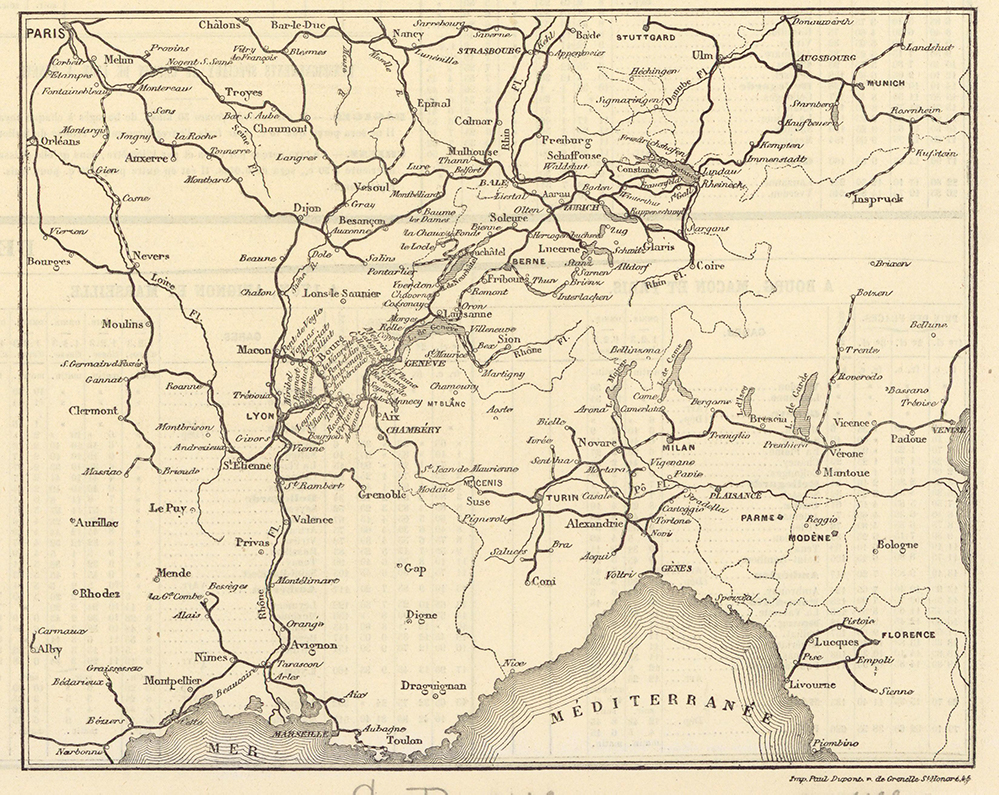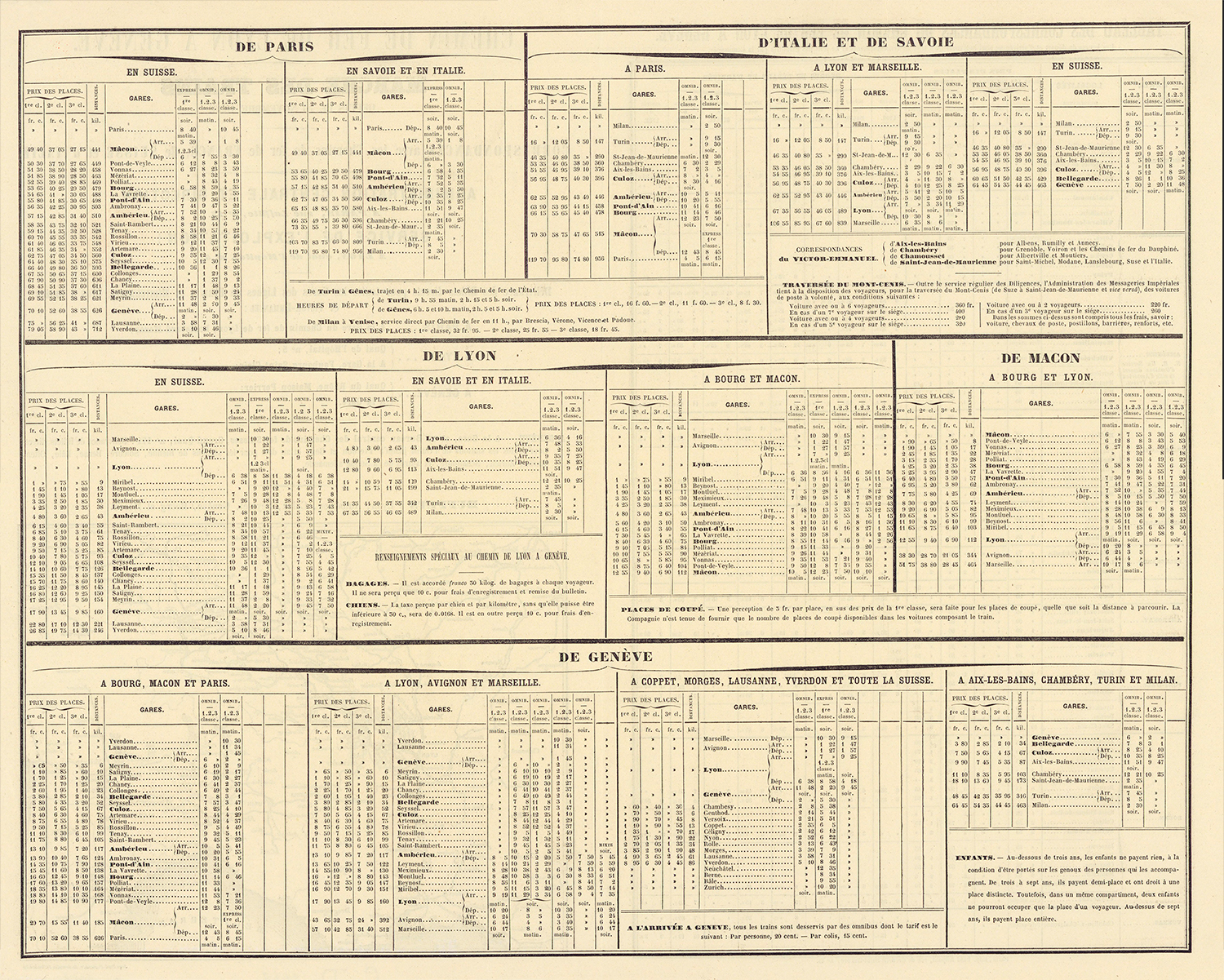Original document
The used document for this project can be found in Bibliothèque Nationale de France's (BNF) digital library,
Gallica.
The map was created by Alfred Potiquet (1820-1883), a civil engineer known for being responsible
of the first stamp catalogue in the world, in 1861. The full title is Chemin de fer de Lyon à Genève.
Marche des trains depuis le 10 novembre 1858. Correspondances avec les chemins de fer de France,
de Suisse & d'Italie. As the title implies, it contains the complete timetable for trains between Lyon
and Geneva, but also the connections between Swiss, French and Italian trains.
The document can be divided into two parts, the first part is the timetable with all the information
about stops, departures, prices, distances and arrivals for each route. For each of the routes,
one can read the prices for each class (first, second and third), the distance between the destination’s
and the different departure and arrival times. The prices and distances are written in regard to the
first city of the route.
The other part is the map over the entire system where all the stops are marked.
The bigger cities where one could change trains is marked with a bigger font,
as seen in the images below.


A few observations have been made while working with the document. Firstly, some trains are written as "express" and are first-class trains only. These are normally faster and creates better connections with other trains. Secondly, the schedules were based on a 12-hours format, with the indications of "matin" (=morning) and "soir" (=evening) to know if it is am or pm. However, these indications are not always clear, and it was a bit confusing to know whether the train left in the morning or in the evening. Furthermore, some small incoherences were observed in the timetables, for example the distance is sometimes different if one goes from A to B or from B to A and same goes for the prices. However, these differences are usually not more than a couple of kilometres or a couple of cents so during our extracting phase they were rationalized.

